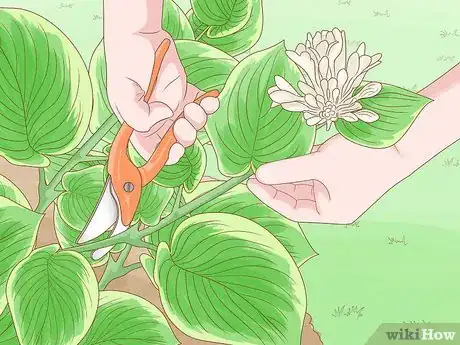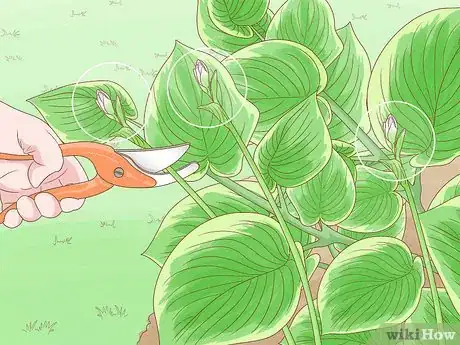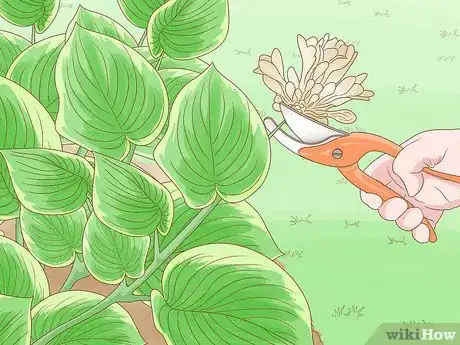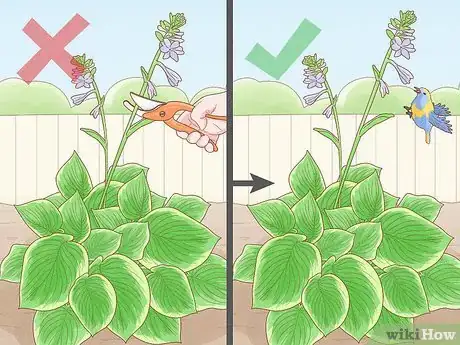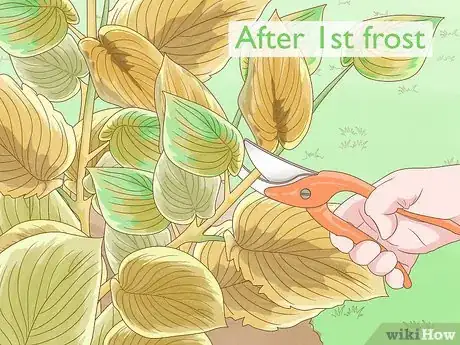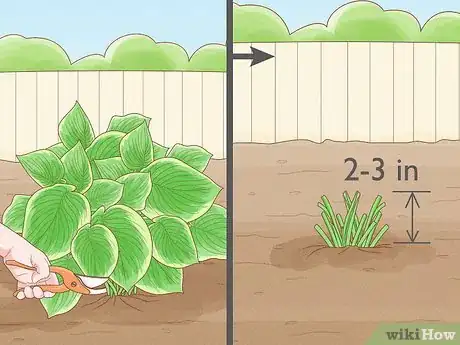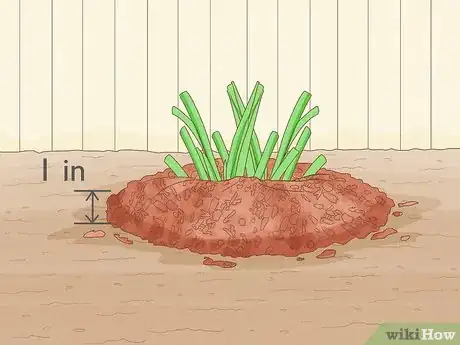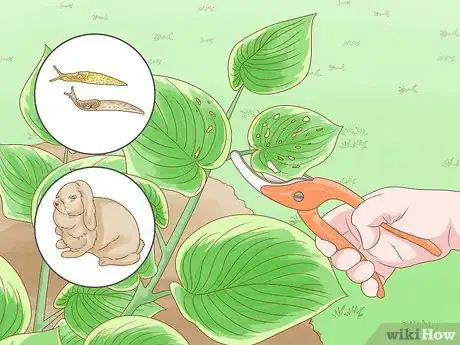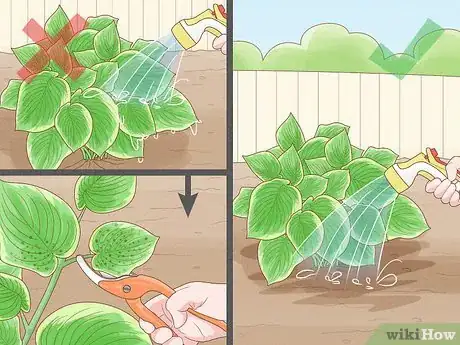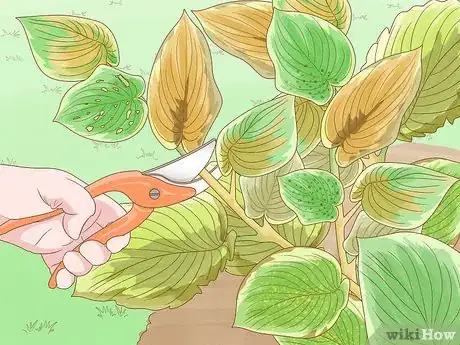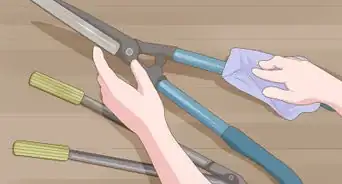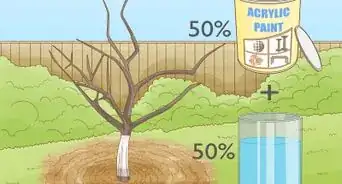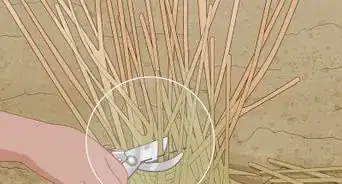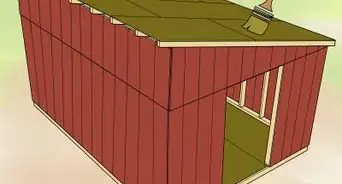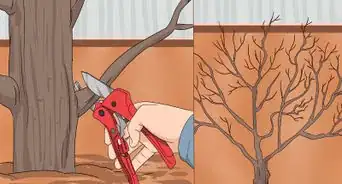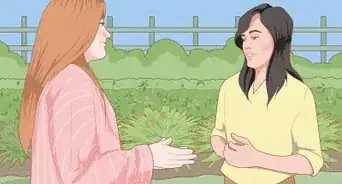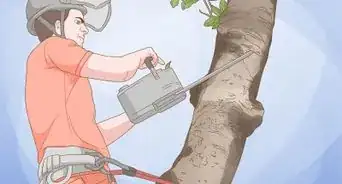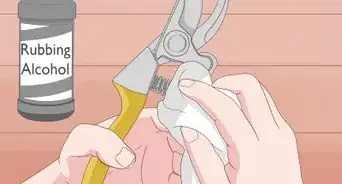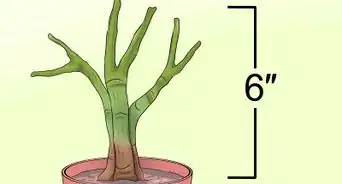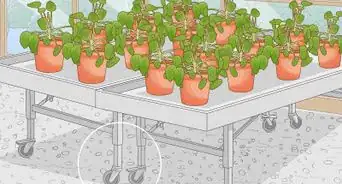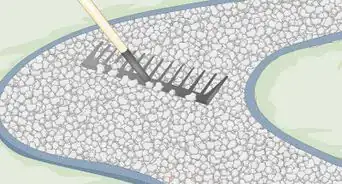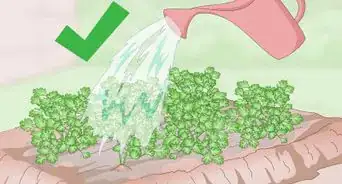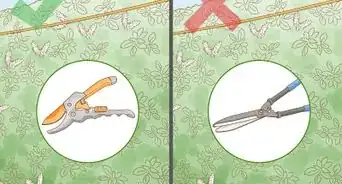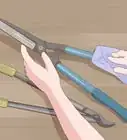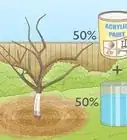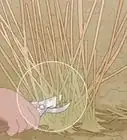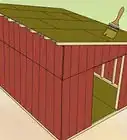This article was co-authored by wikiHow staff writer, Amy Bobinger. Amy Bobinger has been a writer and editor at wikiHow since 2017. She especially enjoys writing articles that help people overcome interpersonal hurdles but frequently covers a variety of subjects, including health and wellness, spirituality, gardening, and more. Amy graduated with a B.A. in English Lit from Mississippi College in 2011 and now lives in her hometown with her husband and two young sons.
wikiHow marks an article as reader-approved once it receives enough positive feedback. In this case, 96% of readers who voted found the article helpful, earning it our reader-approved status.
This article has been viewed 60,591 times.
Learn more...
Hostas are a popular garden plant that are prized for their lush foliage. They’re typically easy to care for, but they do benefit from being cut back when they go into dormancy each fall, and you may need to prune them if you’re dealing with garden pests like slugs. You may also want to snip off your hosta flowers once they start to fade to enhance the beauty of the foliage. Luckily, pruning a hosta is easy to do!
Steps
Deadheading the Hostas
-
1Use sharp shears to cut the flower stalks near the base. The point of removing the flower stem is to keep it from detracting from the look of your garden, so you want to shear it as close to the plant's base as possible. This way, the broad leaves of the hosta will hide the snipped-off stalk.[1]
-
2Snip off hosta flowers before they mature to emphasize the foliage. If you chose a hosta plant because you love the ornamental leaves, but you're not crazy about the flowers, you can snip them off before they mature and go to seed. However, if you prefer, you can leave the flowers on until they wilt.
- Once the flowers go to seed, they absorb energy that would otherwise be used on developing the leaves.
- If you remove the flowers on a hosta, it usually will not flower again that season.
Advertisement -
3Cut off the blooms once they turn brown if you prefer to keep the hosta flowers. Although the leggy stems of hosta flowers can seem unsightly once the flower is wilted, you'll get more enjoyment out of the bloom by leaving it on the plant than you would by cutting it. Hosta flowers are delicate and they wilt quickly once cut. [2]
- Bees and hummingbirds often favor hosta flowers, so leaving the flowers in place can help benefit your local ecosystem.
-
4Don't remove the flowers if you want to attract birds to your garden. The seed-heads on hosta flowers are often eaten by birds. If you like the idea of keeping the local wildlife healthy, you may want to let the flowers go to seed.[3]
- If you do this, all you'll need to do is cut the plant back in the fall. The flower stalks will turn brown when the leaves do.
Cutting Back Your Hostas
-
1Prune your hostas after the first frost. You don't have to cut back hostas for the health of the plant, but they do look unattractive through winter. The plant will turn brown and wilt after the first hard freeze, so it's best to prune it then.[4]
- Hostas are one of the earliest plant in the garden to die back, but they do return in the spring.
- In addition to being unattractive, the leaves are often home to slug eggs, and leaving the foliage will allow the eggs to hatch.[5]
- Slugs are a big problem for hosta gardeners, and they can destroy an entire, otherwise healthy plant.
-
2Cut the plant down with pruning shears to 2–3 in (5.1–7.6 cm). Everything your hosta needs to survive the winter is buried underground, so no harm will come to the plant if you cut it back to ground level. However, leaving a few inches when you cut will help you mark the location of the plant.
- Hostas winter better in the ground than they do in containers, so there’s no need to dig them up for the winter.
- Since the hosta will be dead when you start pruning, it should be easy to snip off the body of the plant.
-
3Lay down a 1 in (2.5 cm) layer of mulch to insulate your hosta plant. If you don't mulch your hosta during the growing season, you may want to do so after you prune it. Although hosta is tolerant of the cold, a layer of mulch can help protect it from repeated freezing and then thawing, which can affect the hosta's dormancy cycle.
- Once the weather starts to warm up, remove some of the excess mulch from around the hosta's crown to prevent it from rotting.
Pruning to Treat Pests and Diseases
-
1Remove leaves which have been eaten by slugs, rabbits, or other garden pests. Hostas are a popular snack for a number of insects and animals. If you notice that your hosta has been nibbled on, use a small pair of shears or a sharp knife to snip away the damaged leaves as close to the base of the stem as possible.[6]
- Hail can also damage the leaves of your hosta plant.
- Removing the damaged leaves will encourage the hosta to direct its energy towards the healthy parts of the plant.
-
2Cut away infected leaves and stems. When you’re watering your hosta plant, try to direct the flow of water down towards the base of the plant. Otherwise, you may start to see wilting leaves, black dots, or stunted growth, which could be signs of a fungus or nematode. If you see these signs, promptly cut away the infected leaves or stems from the plant.[7]
-
3Sanitize your cutting tools after pruning infected plants. If one of your plants is infected with a fungus, virus, or other diseases, you may spread the blight with your tools as you’re pruning. Even if you don’t see any signs of illness, wipe down the blades of your tool with rubbing alcohol before you move to the next plant.[8]
- If you’re removing plants infected with hosta virus X, or HVX, wash your tools and your hands after you finish handling each individual plant.
-
4Burn infected hosta plants if you can. There are a number of diseases which can affect your hostas, the most serious of which is HVX. If you notice light or dark green lines travelling along the veins of your hosta leaves, mottled or blotchy discoloration on the leaves, circular spots, or wilting leaves, it could be a sign of the rapidly-spreading hosta virus X. Remove the entire plant to keep it from spreading. Burning is the most effective way to destroy HVX, though you'll need to make sure it’s allowed in your area.[9]
- Other diseases which might affect your plant include foliar and root-knot nematodes, petiole rot, Southern blight, and the anthracnose fungus.
- If you can not burn the infected hosta plants, send them to the landfill.
- Do not add HVX-infected hostas to your compost pile, otherwise you may spread the disease.
References
- ↑ https://www.bhg.com/gardening/flowers/perennials/should-i-pull-the-flowering-stems-off-my-hostas/
- ↑ https://www.bhg.com/gardening/flowers/perennials/should-i-pull-the-flowering-stems-off-my-hostas/
- ↑ https://extension.psu.edu/cutting-down-perennials-in-the-fall
- ↑ http://www.theiowagardener.com/Cutting%20Back%20Perennials.html
- ↑ https://extension.psu.edu/cutting-down-perennials-in-the-fall
- ↑ http://www.missouribotanicalgarden.org/gardens-gardening/your-garden/help-for-the-home-gardener/advice-tips-resources/visual-guides/hosta-problems.aspx
- ↑ https://extension.psu.edu/hosta-diseases
- ↑ https://extension.psu.edu/hosta-diseases
- ↑ https://hort.uwex.edu/articles/hosta-virus-x/
About This Article
If you want to prune your hostas for winter, wait until after the first hard freeze in the fall. The hosta will start to turn brown, at which point you can cut it back all the way to ground level with sharp pruning shears. If you prefer, you can leave a few inches above the ground to mark the location of your plant. Cover the ground with mulch, and then wait for your healthy hosta to reappear in the spring. For tips on removing hosta flowers, keep reading!
